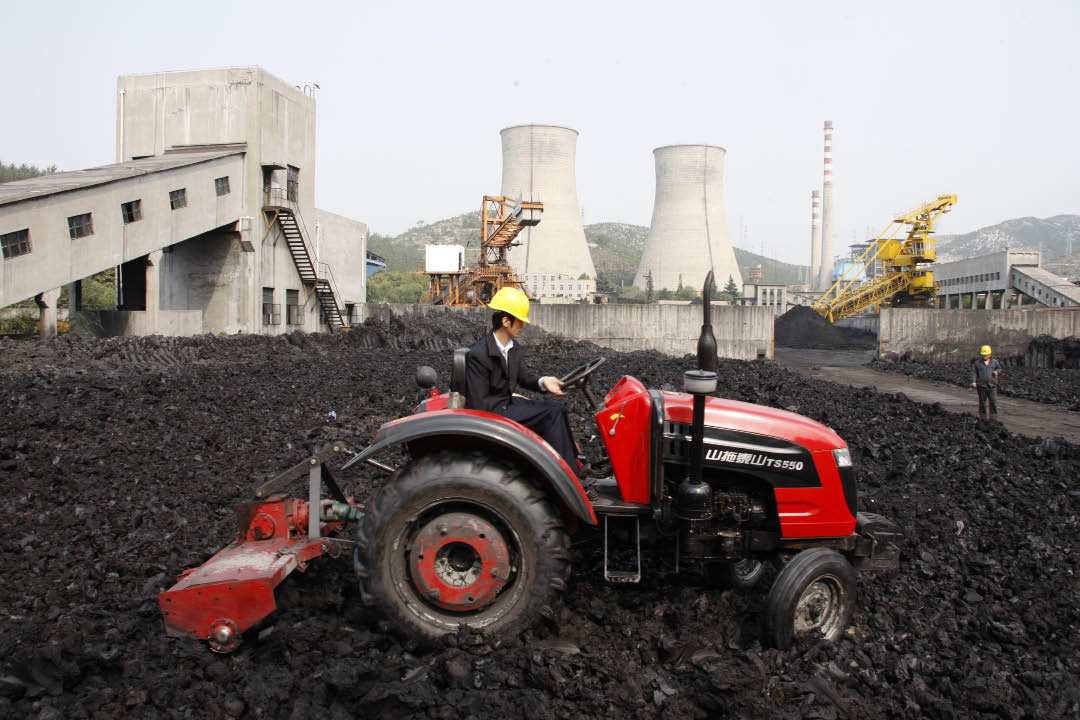
| China's Energy Development – 2011 to 2015 By special correspondent XU KEXI CHINA’S primary energy consumption will be kept to between 4 and 4.2 billion tons of standard coal by 2015, Jiang Bing, director of the development and planning department of the National Energy Administration (NEA), confirmed recently, based on an analysis of China’s basic conditions and trends in international and domestic socio-economic development from 2011 to 2015. Statistics from the National Bureau of Statistics show that China’s 2009 primary energy consumption was about 3 billion tons of standard coal. Therefore in the coming five years the total energy consumption will only be allowed to increase by 30 percent. Given that China is experiencing accelerated industrialization and urban expansion, achieving this goal will be very demanding.
Coal: China's Energy Pillar Coal provides over 70 percent of the country’s primary energy. China holds fairly rich coal deposits but relatively small oil and natural gas reserves. The Chinese government accepted this situation when it drew up its Medium and Long-term Energy Development Plan Outline (2004-2020) based on coal as a major energy source. However, the NEA has always had a mind to reduce the country’s reliance on coal. With the rapid development of wind, nuclear and solar energy and the steady promotion of relatively cleaner fossil fuels such as natural gas, the proportion of coal in total primary energy consumption will decrease substantially in the coming five years, according to Wu Yin, vice-minister of the NEA. Jiang Bing also reckons that China’s coal consumption is likely to drop from 70 percent of total energy consumption to 63 percent by 2015. Calculations based on Jiang’s estimates indicate that if the 2015 primary energy consumption is 4.2 billion tons of standard coal, coal consumption that year should plateau at 3.7 billion tons. However, China’s 2010 coal consumption is about 3.3 billion tons, with 3.2 billion tons self-produced and 0.1 billion tons imported. So to attain the 2015 target of 3.7 billion tons will be a big challenge. Limits for Economically Developed East China According to the NEA, China will place coal-consumption caps on economically developed eastern China, especially the Bohai Rim Region, Yangtze River Delta and Pearl River Delta, by gradually exercising control of the construction of coal-fired units there, Securities Journal has reported. In summary, for the next five years eastern China will build nuclear and gas power plants, while construction of coal power plants will be limited. For the country’s economically backward western and central regions, a strategy to increase economic returns will be based on local conditions such as water resources and environmental capacity. Intelligent optimization will be needed for the construction and operation of large-scale thermal power plants and improvement of electricity transmission networks. For southwestern regions, efforts will be directed to natural gas exploration and hydropower utilization. In addition, balanced development calls for proper measures to be adopted for ecological protection and the guidance of population relocations. Starting in 2011, China will gradually build up Shanxi, Ordos Basin, the southwestern region, eastern Inner Mongolia and Xinjiang into five comprehensive energy bases. To augment them, a nuclear power station will be constructed in the country’s central-eastern region. The six hubs are expected to be making great contributions to satisfying China’s primary energy needs by 2030. |
||
| [Home] |
Tel: 86-10-68326037
Fax: 86-010-68328338
Website: http://www.chinatoday.com.cn
E-mail: chinatoday@chinatoday.com.cn
Copyright (C) China Today, All Rights Reserved.
